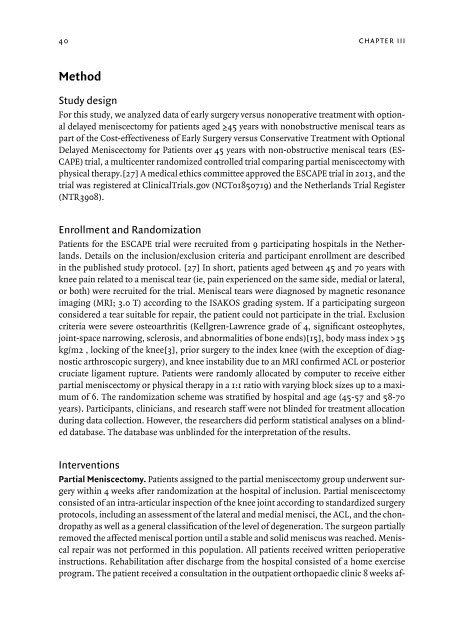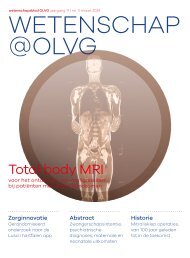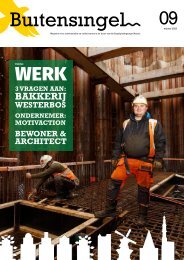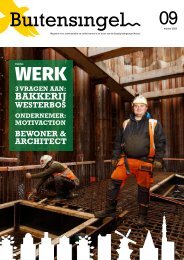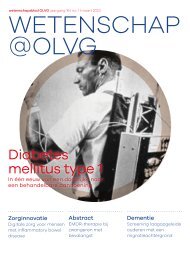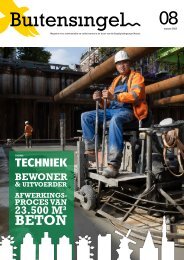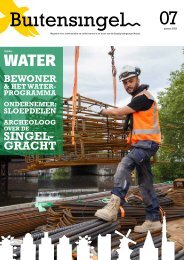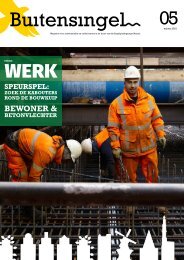Escaping the Scalpel
In-depth evidence to change clinical practice for patients with a degenerative meniscal tear. By Julia C.A. Noorduyn
In-depth evidence to change clinical practice for patients with a degenerative meniscal tear.
By Julia C.A. Noorduyn
You also want an ePaper? Increase the reach of your titles
YUMPU automatically turns print PDFs into web optimized ePapers that Google loves.
40<br />
CHAPTER III<br />
Method<br />
Study design<br />
For this study, we analyzed data of early surgery versus nonoperative treatment with optional<br />
delayed meniscectomy for patients aged ≥45 years with nonobstructive meniscal tears as<br />
part of <strong>the</strong> Cost-effectiveness of Early Surgery versus Conservative Treatment with Optional<br />
Delayed Meniscectomy for Patients over 45 years with non-obstructive meniscal tears (ES-<br />
CAPE) trial, a multicenter randomized controlled trial comparing partial meniscectomy with<br />
physical <strong>the</strong>rapy.[27] A medical ethics committee approved <strong>the</strong> ESCAPE trial in 2013, and <strong>the</strong><br />
trial was registered at ClinicalTrials.gov (NCT01850719) and <strong>the</strong> Ne<strong>the</strong>rlands Trial Register<br />
(NTR3908).<br />
Enrollment and Randomization<br />
Patients for <strong>the</strong> ESCAPE trial were recruited from 9 participating hospitals in <strong>the</strong> Ne<strong>the</strong>rlands.<br />
Details on <strong>the</strong> inclusion/exclusion criteria and participant enrollment are described<br />
in <strong>the</strong> published study protocol. [27] In short, patients aged between 45 and 70 years with<br />
knee pain related to a meniscal tear (ie, pain experienced on <strong>the</strong> same side, medial or lateral,<br />
or both) were recruited for <strong>the</strong> trial. Meniscal tears were diagnosed by magnetic resonance<br />
imaging (MRI; 3.0 T) according to <strong>the</strong> ISAKOS grading system. If a participating surgeon<br />
considered a tear suitable for repair, <strong>the</strong> patient could not participate in <strong>the</strong> trial. Exclusion<br />
criteria were severe osteoarthritis (Kellgren-Lawrence grade of 4, significant osteophytes,<br />
joint-space narrowing, sclerosis, and abnormalities of bone ends)[15], body mass index >35<br />
kg/m2 , locking of <strong>the</strong> knee[3], prior surgery to <strong>the</strong> index knee (with <strong>the</strong> exception of diagnostic<br />
arthroscopic surgery), and knee instability due to an MRI confirmed ACL or posterior<br />
cruciate ligament rupture. Patients were randomly allocated by computer to receive ei<strong>the</strong>r<br />
partial meniscectomy or physical <strong>the</strong>rapy in a 1:1 ratio with varying block sizes up to a maximum<br />
of 6. The randomization scheme was stratified by hospital and age (45-57 and 58-70<br />
years). Participants, clinicians, and research staff were not blinded for treatment allocation<br />
during data collection. However, <strong>the</strong> researchers did perform statistical analyses on a blinded<br />
database. The database was unblinded for <strong>the</strong> interpretation of <strong>the</strong> results.<br />
Interventions<br />
Partial Meniscectomy. Patients assigned to <strong>the</strong> partial meniscectomy group underwent surgery<br />
within 4 weeks after randomization at <strong>the</strong> hospital of inclusion. Partial meniscectomy<br />
consisted of an intra-articular inspection of <strong>the</strong> knee joint according to standardized surgery<br />
protocols, including an assessment of <strong>the</strong> lateral and medial menisci, <strong>the</strong> ACL, and <strong>the</strong> chondropathy<br />
as well as a general classification of <strong>the</strong> level of degeneration. The surgeon partially<br />
removed <strong>the</strong> affected meniscal portion until a stable and solid meniscus was reached. Meniscal<br />
repair was not performed in this population. All patients received written perioperative<br />
instructions. Rehabilitation after discharge from <strong>the</strong> hospital consisted of a home exercise<br />
program. The patient received a consultation in <strong>the</strong> outpatient orthopaedic clinic 8 weeks af-


